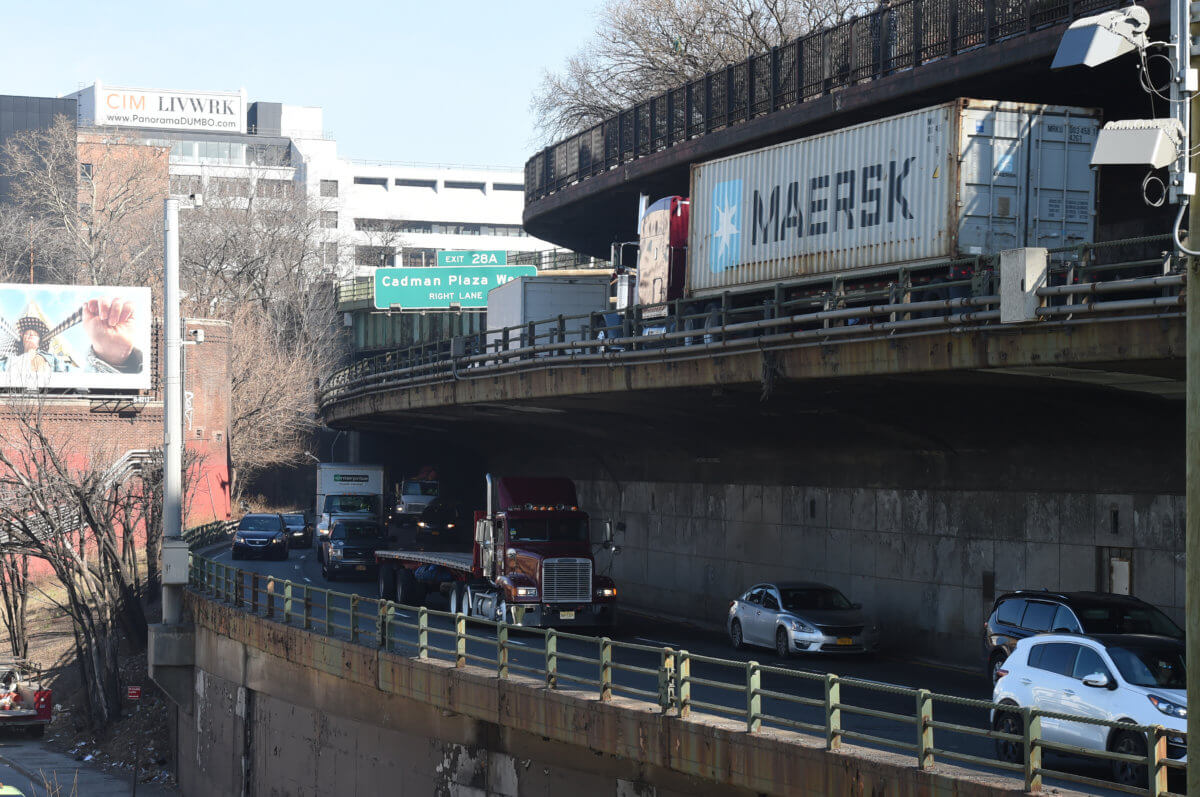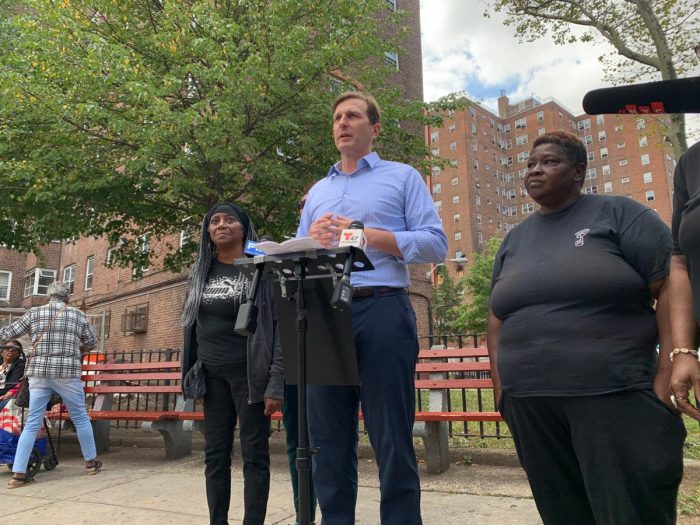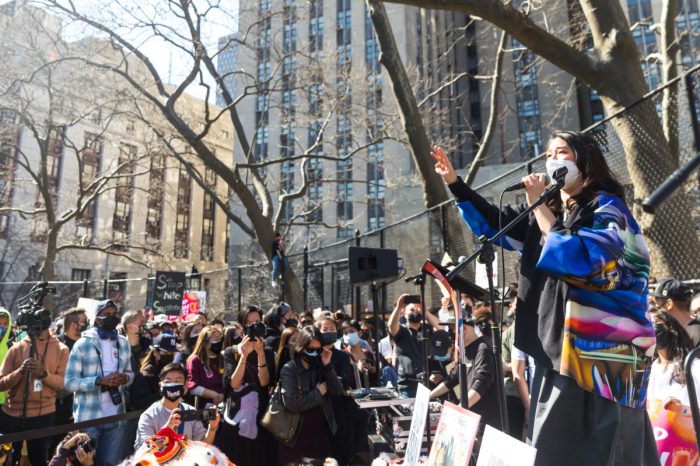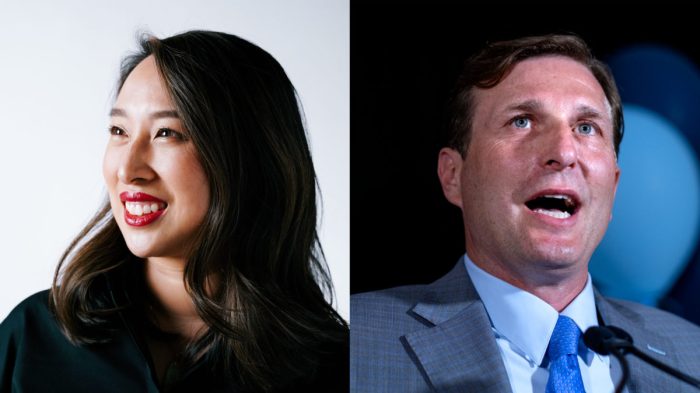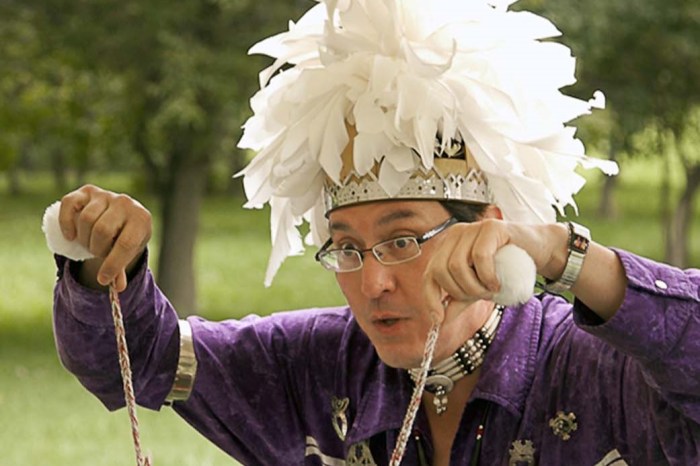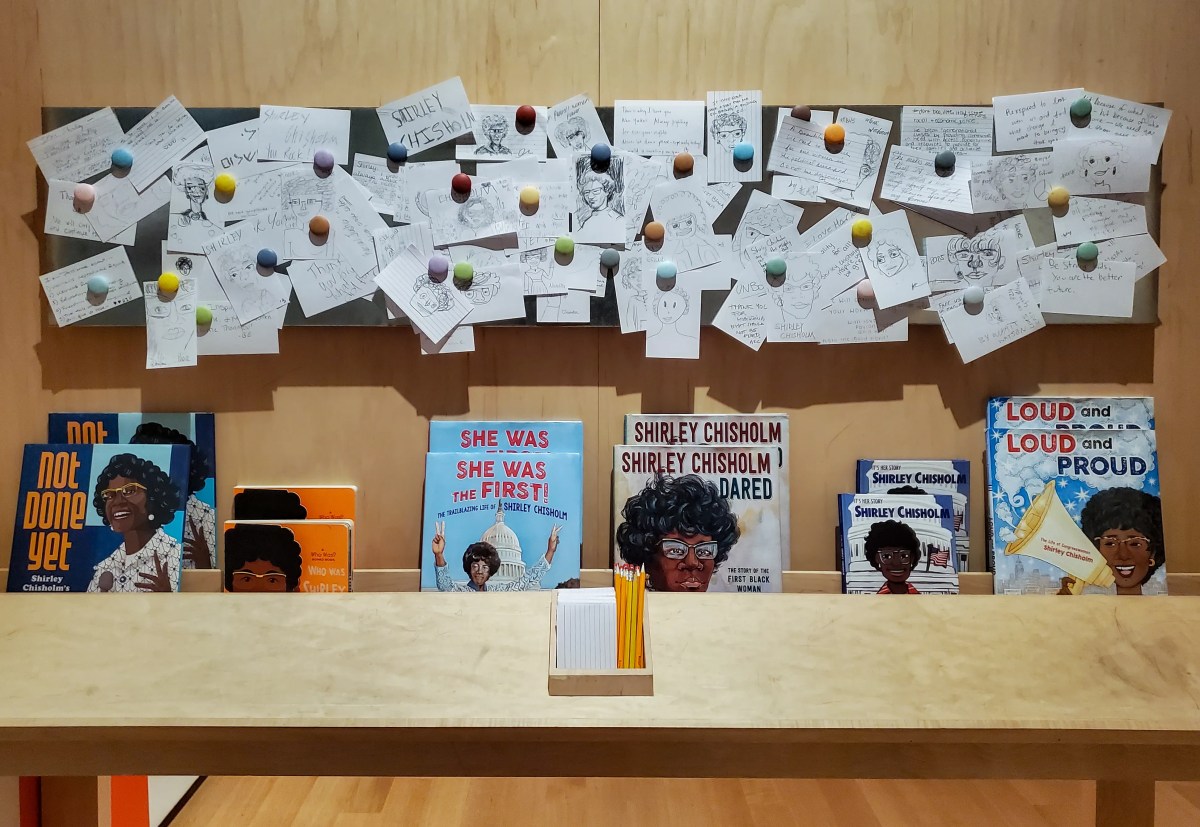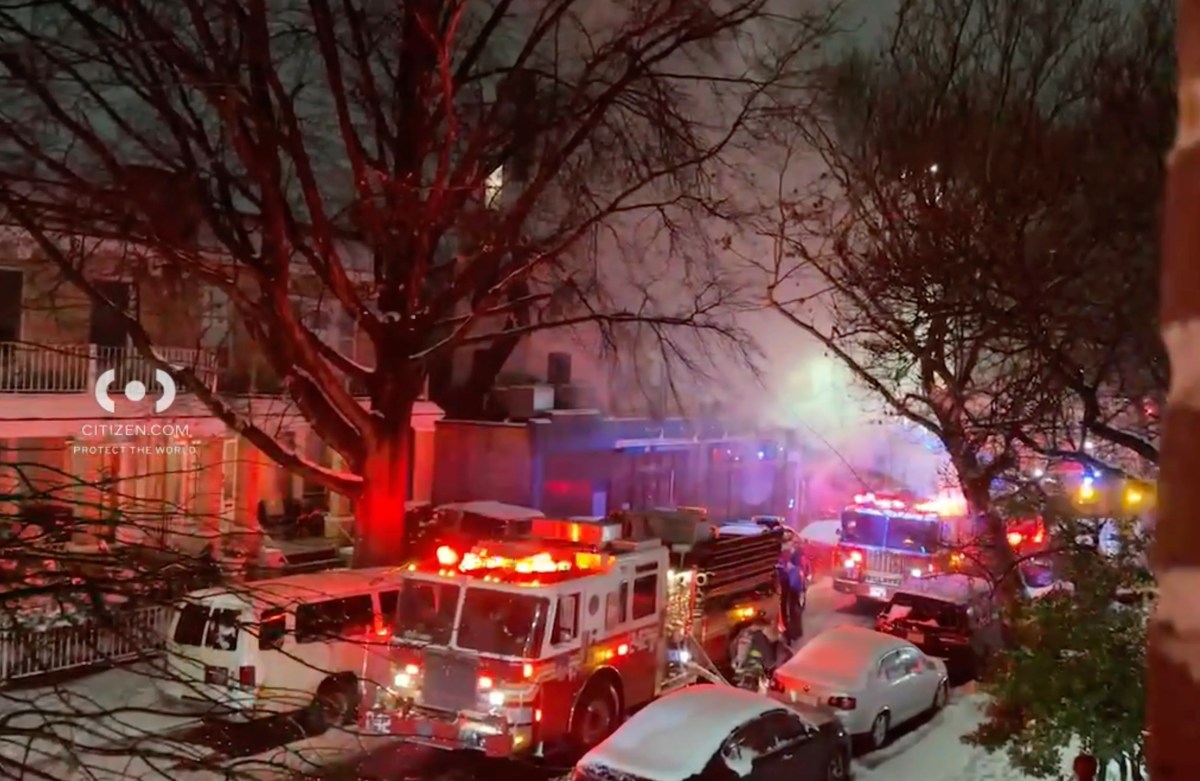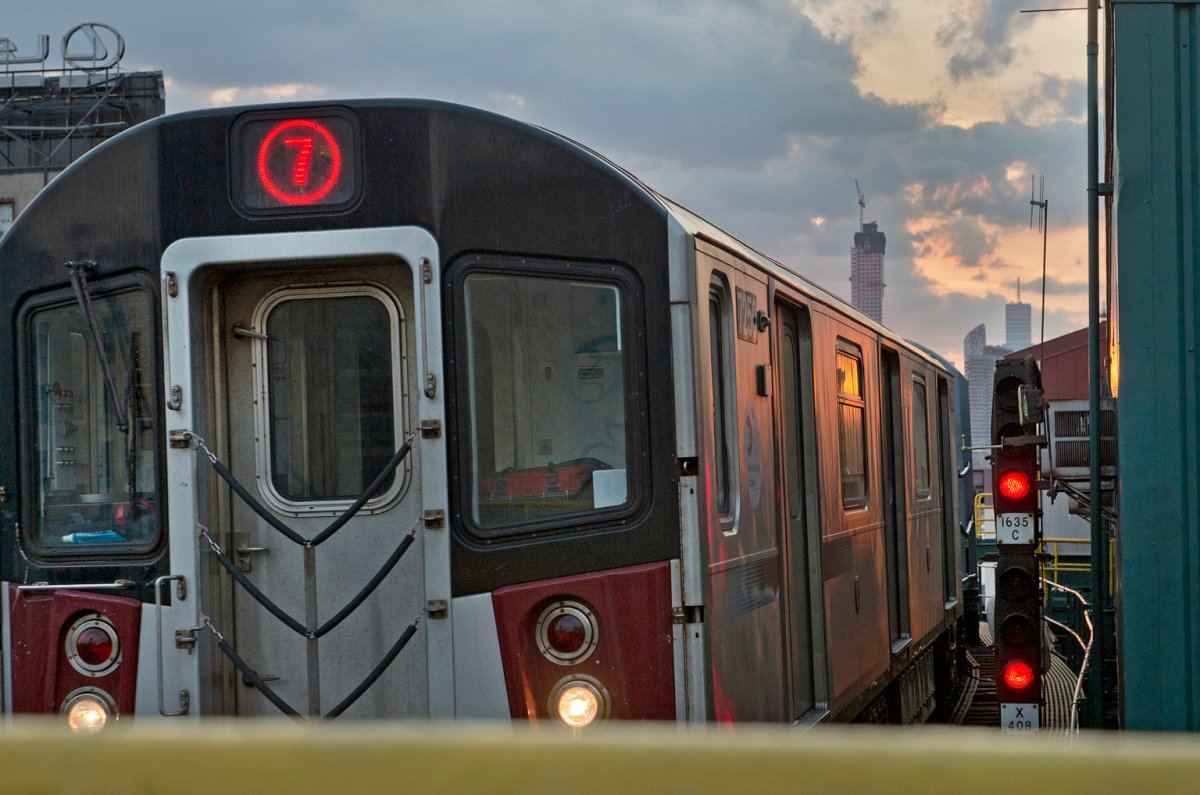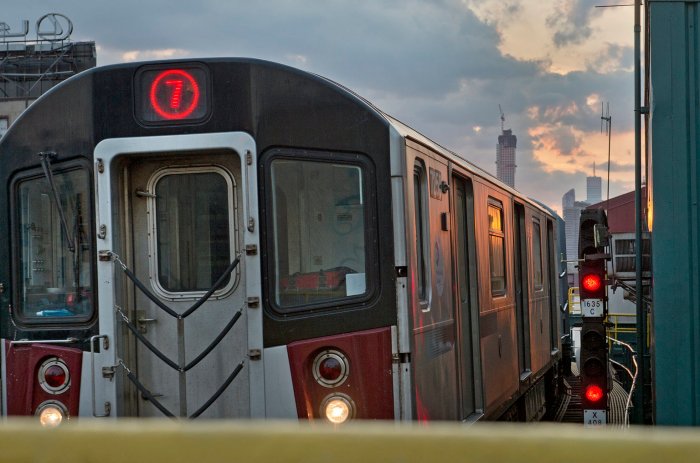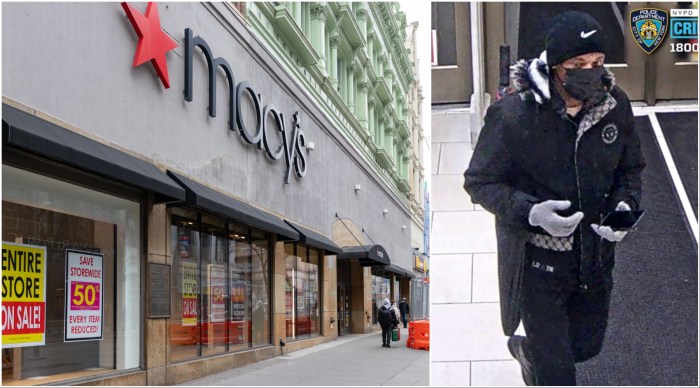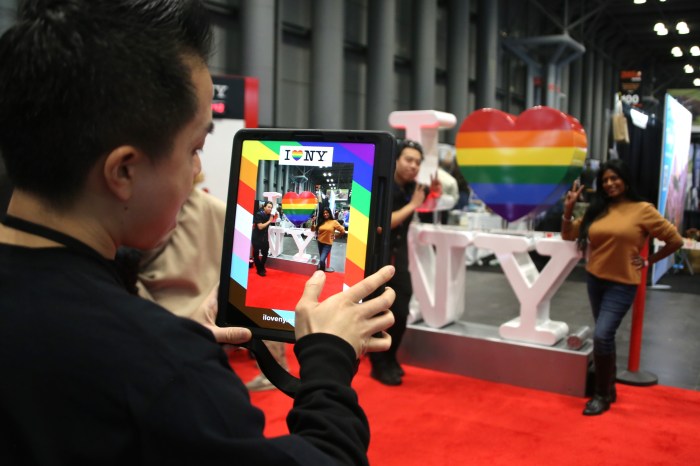A cadre of Brooklyn pols say the Adams administration’s re-envisioning of the Brooklyn-Queens Expressway is simply more of the same, and are urging the administration to present a “more forward-thinking option” to fix the crumbling highway.
“The rebuilding of the BQE presents us with a once-in-a-generation opportunity to undo decades of environmental racism and community harm, protect our planet, and provide the 21st-century infrastructure Brooklynites deserve. With the climate crisis upon us, we must explore options that ensure a just transition away from fossil fuels and greenhouse gases,” read the statement signed by Congress Member Nydia Velázquez, Congress Member-elect Dan Goldman, state Senator Andrew Gounardes, Assembly Member Jo Anne Simon and City Council Member Lincoln Restler.
“We need to see a more forward-thinking option that re-imagines the entire BQE corridor for the health and well-being of New Yorkers and our planet.”
The city Department of Transportation last week unveiled preliminary plans to redesign the central component of the Robert Moses-era expressway, particularly the crumbling city-owned triple cantilever in Brooklyn Heights. All of the major proposals involve either a partial or total rebuild of the cantilever’s retaining wall, while in some form covering the unsightly highway with greenspace connecting the Brooklyn Heights promenade to Brooklyn Bridge Park.
Most controversially, the administration says that it would restore a third lane in each direction on the highway, after being reduced to two during the de Blasio administration in an effort to lengthen the highway’s lifespan. DOT honchos say the third lane could be used as a shoulder, a high-occupancy vehicle lane, or a lane for transit like buses. Engineers had previously warned that without intervention, the highway could be effectively unusable within this decade.
The Brooklyn pols say the administration’s proposals — which will be workshopped and finalized in the coming months ahead of the availability of critical federal infrastructure grants — does not pass muster for their goals of reducing New York’s car dependency and limiting the negative climate impact of city infrastructure.
“We recognize that the triple cantilever is falling apart and we support efforts by the Adams’ administration to secure federal funding to address this critical need,” said the pols. “Yet any proposal that takes us backward by expanding cars and trucks to three lanes would result in accommodating six million more vehicles annually on the BQE. That is at direct odds with our city and state’s environmental goals.”
“We must encourage forward-thinking policies that consider Bus Rapid Transit and increase regional marine and rail freight movements to minimize long haul trucking on our roadways and bridges,” they continued.
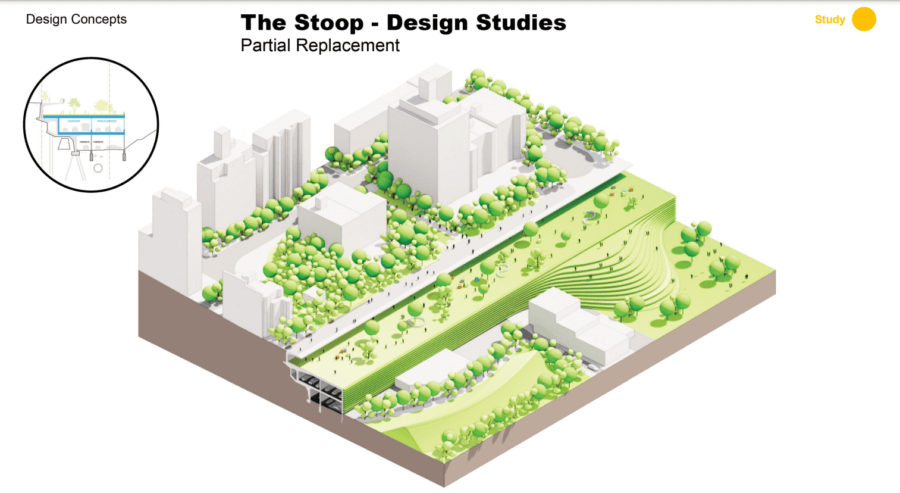
The electeds’ fighting words echo comments made by activist groups, like the Brooklyn Heights Association, a local civic group that said the administration’s plan does not demonstrate a commitment to “transforming our infrastructure to meet the future.”
Brooklyn Borough President Antonio Reynoso, meanwhile, has said that the hyper-focus on the triple cantilever ignores the damage done by the highway throughout its corridor, including state-owned sections to the north and south.
The mayor’s office did not respond to a request for comment. The Department of Transportation referred back to a previous statement highlighting that most of the BQE’s length is state-owned, and will require state assistance for further envisionings.
“We are urgently pursuing a long-term fix for the city-owned portion of the BQE in Brooklyn, while taking a bold, corridor-wide approach to address the entire structure and reconnect communities throughout Brooklyn divided by this highway,” said DOT Commissioner Ydanis Rodriguez in a Dec. 13 statement. “These concepts represent ambitious ideas for how the city can reimagine BQE Central to improve neighborhood public space and quality of life. I welcome all organizations selected to be community partners, which will help DOT meaningfully connect with underserved communities across Brooklyn and advance equitable, multilingual, inclusive planning.”



